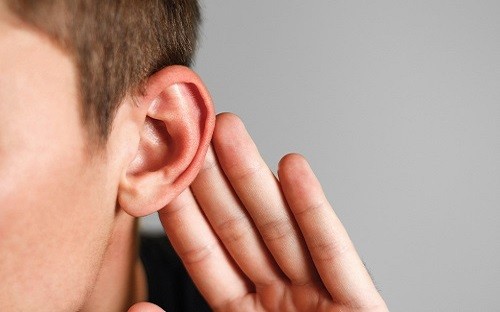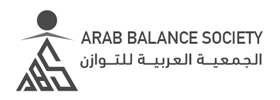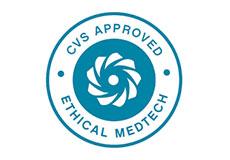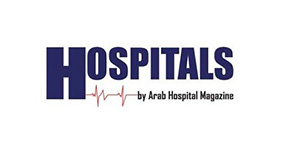Aetiology of Single-Sided-Deafness Among Patients at King Fahad Specialist Hospital
By Mona Jawad Alameer, Audiologist, Department of Otorhinolaryngology, Audiology clinic, King Fahad Specialist Hospital, Dammam, Saudi Arabia
Single- sided deafness (SSD) is defined as severe to profound Sensorineural hearing loss in one ear and with normal or near to normal hearing in the other ear. Scientists consider SSD as the severe degree of unilateral hearing loss and can cause reduced school performance among children.
One of the major problems that the SSD patient faces is the head shadow affect, where sound coming from the side of the deprived ear will drop in head shadow and will be detected by the better ear. Studies suggested that up to 10-16 dB HL attenuation of the signal occurs due to head shadow affect. Low frequencies contain long wavelength and bend easily around the head to reach the opposite ear (good ear). While high frequency (HF) sound, which has short wavelength, is more likely to be attenuated and therefore, cannot reach opposite ear. In addition, some consonant sounds are located within HF; therefore, SSD patients reported difficulty in speech discrimination and understanding.
Spatial hearing or localisation is the ability to identify the sound coming from “which side”. The consequences of SSD includes the loss of that ability. It is caused by the inability to detect interaural time difference and interaural level difference. Human ears could differentiate within millisecond between signal stimuli when coming from one side or the other; this mechanism (ITD) occurs at low frequencies (LF) <1500 Hz. On the other hand, ILD occurs at HF above 1500 Hz, which means that the sound is louder at nearest ear than the other.
SSD occurs due to various causes, including acoustic neuroma or vestibular schwannoma, head trauma, cochlear nerve deficiency, sudden sensorineural hearing loss (idiopathic), congenital SSD, Mumps virus and Meniere's disease.
Through advanced technology implant, patients with SSD may get a higher quality of life. Intervention depending on the aetiology of SSD will be considered as a first step toward appropriate treatment. For instance, when the cause sited within the inner ear (cochlea), a cochlear implant would provide a positive outcome. However, if the aetiology found within the auditory nerve or higher (central lesion), the cochlear implant will not provide positive outcomes.
Objective:
The aim of this study is to report the main aetiology of SSD among King Fahad Specialist Hospital, Dammam (KFSH-D) patients.
Methods:
A retrospective study, data collected from medical files of patients who visited the ENT clinic. All patients included were diagnosed after audiological assessments at KFSH-D during the period of December 2012 until December-2017. The total number of patients who were diagnosed with SSD was 33 and age ranged from 8 to 63 years.
Inclusion Criteria:
Pure Tone Audiometry (PTA) criteria: The non-functional ear hearing thresholds average for the frequencies 0.5, 1, 2 and 4 kHz should be ≥ 70 dB HL. Whereas the good ear (contralateral side) hearing thresholds average must be ≤30 dB HL. The interaural threshold difference between ears must be equal to or above 40 dB HL.
Exclusion Criteria:
The patient who did not meet the criteria was excluded.
Result:
| Etiology | Patients’ Numbers | Percentage |
| Congenital SSD | 8 | 24.2% |
| Vestibular Schwannoma | 6 | 18% |
| Head Trauma | 6 | 18% |
| Unknown Aetiology | 4 | 12% |
| Cholesteatmoma | 2 | 6% |
| Sudden SSD | 2 | 6% |
| Acute Lymphocytic leukaemia post chemo-therapy |
1 | 3% |
| Perilymphatic fistula | 1 | 3% |
| Labyrinth Ossification | 1 | 3% |
| Jugular formen tomure | 1 | 3% |
| Cogan's syndrome | 1 | 3% |
Discussion:
In this study, the most common cause of SSD was congenital, 2 cases with Michel Aplasia (total absence of inner ear structure/no cochlear and vestibular organs) and were determined via CT scan. It is a rare inner ear malformation, that occurs in about 1 per cent of cochlear bony abnormality. Other 3 congenital cases had unremarkable CT or MRI whilst 2 cases had not done CT or MRI.
Many congenital cases with SSD were due to Cochlear Nerve Deficiency (CND) as regard to researches; it was the first most aetiology of unilateral deafness in a Chinese Study (40 per cent of cases). On the other hand, in this study CND would not document.
Vestibular schwannoma is the second associated cause. This study showed that all Vestibular schwannoma cases were within the cerebellopontine angle lesion.
In this study, all SSD patients with Vestibular schwannoma had acquired gradual unilateral hearing loss (5 out of 6) except one case had sudden hearing loss which was pre-surgery removal.
Head trauma, which was associated with temporal bone fractures/or labyrinthine concussion without fracture was also the second main causes of SSD. Our study demonstrated 1/6 had Transverse temporal fracture, 2/6 as had no fracture, 1/6 with longitudinal temporal fracture, and 1/6 documented as Labyrinth Ossification and, one case without written result through CT test.
The complication of chronic otitis media with cholesteatoma is proven. The reason refers to the bacterial toxins leak from round window to the inner ear and end up with Sensorineural hearing loss. Two cases of SSD associated with cholesteatoma. One case had SSD after petrosectomy for conginital Cholesteatoma and the second case with acquired cholesteatoma.
Sudden single sided deafness reported in 2 adult patients. One of the patients had SSD post renal transplant, the other case acquired SSD after waking up with no other issues (both had normal radiological tests). There is no clear correlation between SSD and kidney transplant. Even though, one study suggested that high levels of tacrolimus (drug taken after organ transplant to reduce immune system) might be associated with sudden hearing loss. Two reported cases had sudden HL after kidney transplant related with elevated levels of tacrolimus but hearing loss was bilateral.
Acute lymphocytic leukaemia post chemo-therapy is a stranger aetiology. In this study, an 8-year-old patient noticed right ear hearing loss immediately after 4 months of post chemo-therapy. The patient also had history of head trauma since 6 years, pre leukemia, with no baseline hearing test but CT showed normal temporal bone. It’s hard to differentiate the causes of SSD among these factors in this young patient.
On the subject of chemotherapy, studies proved that chemo-therapy with cisplatin can cause asymmetrical hearing loss instead of symmetrical HL. Cisplatin does not always lead to symmetrical HL.
Otolaryngology—Head and Neck Surgery reported a first case in relation to Chronic Myeloid Leukemia with sudden Single sided deafness. The study revealed that unilateral sudden profound hearing loss is the first demonstration of acute lymphocytic leukaemia. Leukaemia is considered as one of the aetiologies of acute unilateral hearing loss.
In the patient with SSD due to acute lymphocytic leukaemia post chemo therapy, leukaemia is the probable cause of SSD. However, additional investigation is needed to confirm the aetiology and to exclude other aetiologies. Moreover, Otology should keep in mind the possible association between sudden SSD and hematologic disorders as leukaemia so they would not be missed along with other different possibilities such as Vestibular schwannoma.
Unknown aetiology recorded for 4 cases – 2 had normal and unremarkable CT or MRI, and 2 patients with no radiological test.
Other different SSD aetiology is due to Perilymphatic fistula, followed by Cogan's syndrome (Autoimmune disorder), Jugular Foramen Schwannoma and finally, Labyrinth Ossification appeared through CT, without history of infection or head trauma.
Regarding intervention, Cross and Baha can be considered as alternative hearing solutions. This should overcome the head shadow effect, however, would not restore binaural hearing and spatial listening. Many schools suggested that any kind of bone conduction aid is an optimal treatment option for all aetiologies of SSD.
Conclusion:
Single sided deafness is a serious medical problem which interferes with the patient’s communication ability. Knowing the aetiology of single sided deafness is the first step toward the provision of successful intervention. Moreover, it can draw attention regarding threatening medical issues, which are associated with SSD.
References available on request.
Alameer discussed ‘Etiology of Single-sided deafness among patients at King Fahad Specialist Hospital’ on April 26 at the ME OTO Exhibition 2019.























